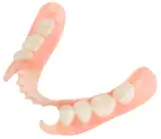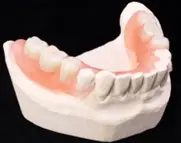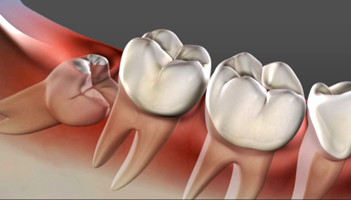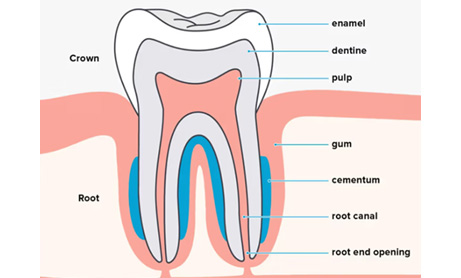One of the most common queries we get in our practice is ‘how do I replace my missing teeth?’. Fortunately, there are several options to permanently replace missing teeth to restore your bite and looks. Let us look at these options individually and then compare them.
Denture



What is it?
For the purpose of this article, denture will mean a removable prosthesis. They may be partial or complete dentures. Removable dentures have been the mode of replacing teeth for a long time. Dentures are made of an acrylic base on which the missing teeth are fixed. This base rests on the gums and also takes some support from the teeth for stability. There are different options available ranging from a basic acrylic denture to more aesthetic, lightweight and comfortable alternatives.
How is it done?
The dentist will take measurements of your upper and lower dental arch. There may be one or more appointments in between to check bite and looks of the teeth, before delivering the denture to the patient. It may take a few days getting used to the denture. Wear the denture as directed by your dentist and approach them for adjustments, if any.
Points to know
There are a few things you should be aware of before going ahead with the denture. Dentures are removable; they are not fixed to the jaw bone. They will move a little when you chew or talk. This doesn’t mean they will easily fall out of your mouth. A well-made denture fits and sits well on the arch. However, as dentures trap food on and under them, you are expected to remove and clean them after every meal. Dentures can be easily cleaned with soap and water. There are also denture cleansers available for a thorough cleaning. Do not sleep with your dentures on. With time, as the jaw bone shrinks, dentures can become loose and a refitting may be needed.
Dentures are a removable, quick, non-invasive and economical replacement option.
Bridge

What is it?
A bridge is also called a fixed partial prosthesis. A bridge as the name suggests, bridges the gap between two teeth. A dental bridge consists of one or more artificial teeth attached to crown(caps) that are fixed on the adjacent natural teeth or dental implants. This article uses the word ‘bridge’ only for tooth-supported prosthesis.
How is it done?
To replace missing tooth/teeth, the dentist will shape the teeth adjacent to the gap to create space for the cap. Measurements are recorded and sent to a lab for fabrication of the bridge. After a round of trial, in a week or so, the bridge is permanently cemented to the teeth. Patients are usually comfortable with a bridge from day 1 and are allowed to have almost all food, except something very hard and sticky.
Points to know
Most people opt for a bridge because it is a non-surgical and fixed option. However, minimum two teeth need to be filed by approximately 1 to 2 mm all around, to make space for the caps in the bridge. This is loss of precious tooth material. The tooth which is lost is only superficially replaced without replacing the root. This leads to bone loss. Eventually, as the bone and gum recession continue, bridges may need to be replaced after 10 to 15 years.
Bridge is a quick, minimally-invasive, relatively economical and fixed option.
Implant

What is it?
A dental implant involves a titanium post surgically placed into the jawbone, which acts as a root for a replacement tooth. A crown is then attached to this post.
How is it done?
The procedure is carried out under local anaesthesia. The gums are carefully opened and the underlying bone is precisely drilled to receive an implant of a particular size. The implant is then placed and tightened in the bone. The gums are covered with sutures(stiches) which are subsequently removed after 8 to 10 days. Post operative discomfort is easily managed with painkillers. No hospitalisation is needed. The procedure usually takes around an hour, but can take slightly longer if multiple implants are planned in the same sitting. Patient can resume normal diet within a week. Natural bone forms around the implant and helps to stabilise it permanently. This process is called osseointegration. Osseointegration takes 3 to 6 months. After this wait, a crown is placed on the implant.
Points to know
Having a good quality and quantity of bone is necessary for an implant. After placement, implants help maintain the jawbone’s integrity, preventing bone loss that can occur with missing teeth. Implants are known for their longevity and strength, often lasting a lifetime with proper care. Implants have higher initial costs but may be more cost-effective over the long term due to their durability.
Implants are an excellent way to permanently replace missing teeth.
Lets compare the 3 options
Here is a quick summary comparing the 3 modalities.
Consideration | Denture | Bridge | Implant |
Fixed/Removable | Removable | Fixed | Fixed |
Invasiveness | Non-invasive | Minimally-invasive | Moderately-invasive |
Time needed | 7 to 15 days | 5 to 10 days | 3 to 6 months |
Number of visits | 2 to 5 | 3 to 5 | 4 to 7 |
Bone height | Not preserved | Not preserved | Preserved |
Adjacent teeth | Not affected | Affected | Not affected |
Replacement needed | Every 4 to 7 years | Every 10 to 15 years | Never |
Comfort | Moderately comfortable | Comfortable | Very comfortable |
Looks | Average | Good | Very Good |
Cost | ₹ | ₹₹ | ₹₹₹ |
Choosing between implants, bridges and dentures depends on your individual needs, oral health, and budget. Implants offer a more permanent solution and help preserve bone, while bridges and dentures are quicker and less invasive.
For personalized advice and to explore the best option for your smile, reach out to us at Barve Dental Clinic. Our team is here to help you make an informed decision for a healthier, happier smile. Contact us today for a consultation!









